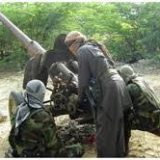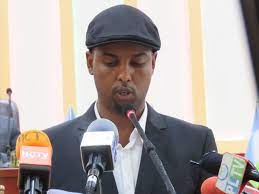Somalis torn between hunger in Dadaab and uncertainty at home
advertisements
On 8 December, a blue and purple bus made a highly significant and somewhat controversial journey, 350 miles across the tatty scrubland that forms the border between Kenya and Somalia. Inside the vehicle, bumping across the plain, were 91 people travelling from their old home, the Dadaab refugee camp in northern Kenya, to an even older one: the port city of Kismayo in southern Somalia, from where they had fled war and famine nearly four years ago.
The bus was the first in a pilot project run by the UN refugee agency, UNHCR, facilitating what is called “spontaneous, voluntary returns” of refugees to Somalia. Four more buses have since departed for Somalia, returning home a total of 602 people. A sixth was postponed due to security concerns.
The controversial aspect is that Somalia is still at war, food shortages are widespread, and access for humanitarians is difficult along roads blocked by fighting and checkpoints established by the insurgent group al-Shabaab.
The same month as the returns began, the UN humanitarian coordinator in Somalia, Philippe Lazzarini, appealed for nearly $900m in 2015, warning: “For the first time since the 2011 famine, the number of people in need of life-saving assistance has increased. Over a million Somalis are unable to meet their basic food requirements. A further 2.1 million people are on the verge of acute food insecurity, bringing the total number of people in need of humanitarian assistance to 3.2 million.”
Kenya has waged a long campaign to encourage the refugees to return, even invading Somalia in 2011 in part to create a safe area where the refugees could be settled. In November 2013, two months after the Westgate shopping mall attack by al-Shabaab, that pressure culminated in the signing of a tripartite agreement on voluntary return between Kenya, Somalia and the UN, even though conditions in Somalia are still bad.
The Dadaab refugee camp is the world’s largest, with a population of about 357,000, and approximately 1,000 births a month. UN officials have said they expect it still to exist in 10 years’ time. Though the numbers going back are tiny, the return agenda is shaping both policy and individual refugee decisions.
Donors have been quick to encourage returns and trim budgets in Dadaab. Last year, NGOs leapt to pitch for programmes supporting returns while cutting other activities in the camp. And when, at the end of last year, the World Food Programme (WFP) ran short of money globally and asked rich governments for help, Syria, South Sudan and Central African Republic were prioritised while the Kenya operation was among those that took a hit.
In November and December, the WFP was forced to halve food rations – normally about 3kg of dry sorghum and maize a person weekly. A group of vulnerable women left their babies at the gates of a Dadaab food warehouse in protest. Despite a vigorous WFP campaign explaining otherwise, to the refugees it was all part of the same conspiracy: to force them back to Somalia. “1.5kg a week? A person cannot stay here,” said Mohammed, a long-term resident of Ifo camp who came as a child in 1992 and whose five children were all born here and have never left.
Refugees are supposed to be offered one of three durable solutions to their displacement: return to their country of origin, integration into their country of asylum, or resettlement to a third country. Kenya, however, is unwilling to grant the refugees citizenship, even seeking to impose a new security bill this month with a clause limiting the amount of time refugees can stay. Meanwhile, resettlement slots to the US and Europe have all but dried up, falling from thousands a year in the 90s, to a few hundred now.
Feeding people whom the world has confined to camps is an obligation under international law, but as donors tire of protracted refugee situations such as Dadaab, budgets begin to fall. Earlier in the year, Médecins sans Frontières condemned appalling conditions in Dadaab and warned that humanitarian needs must be met in the camp as donors’ attention shifts elsewhere.
The leader of Mohammed’s block went on a UN-sponsored trip to Kismayo to see for herself conditions for return. She was not impressed. “No schools, no hospitals, no security,” she reported back to her constituents. Nonetheless, more people are signing up for the return package, which includes three months of rations and a cash grant of $150 (£99) a person. For Mohammed, raised in the camp, Somalia is a foreign country, and a scary one at that. “I fear that place,” he said. “But if the food stops, there is no reason to stay in the camp.”
From one perspective, the picture of those buses bouncing across the no man’s land could be a good news story. From another, it could be the last resort of desperate people forced to choose between hunger and war.




















